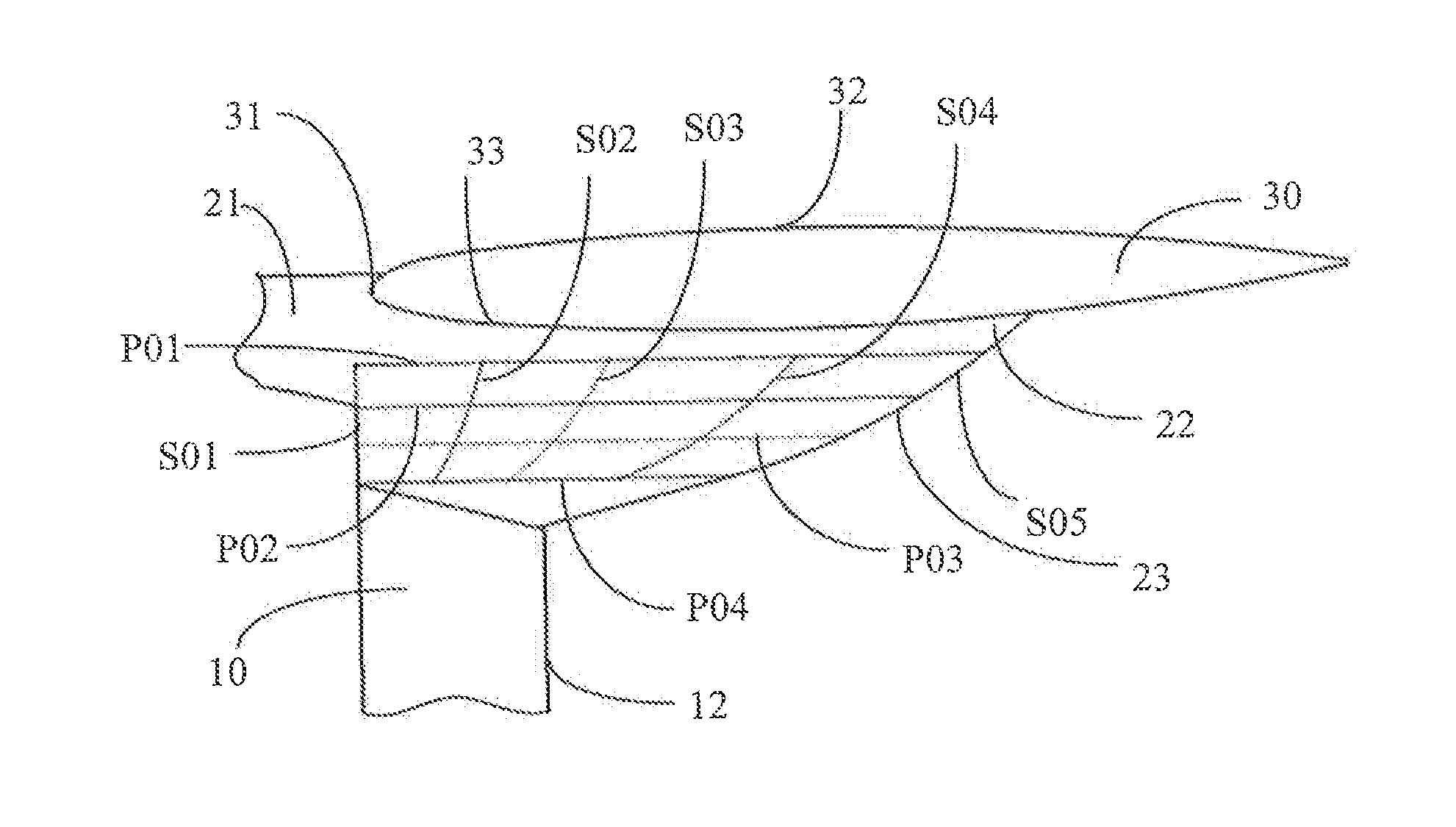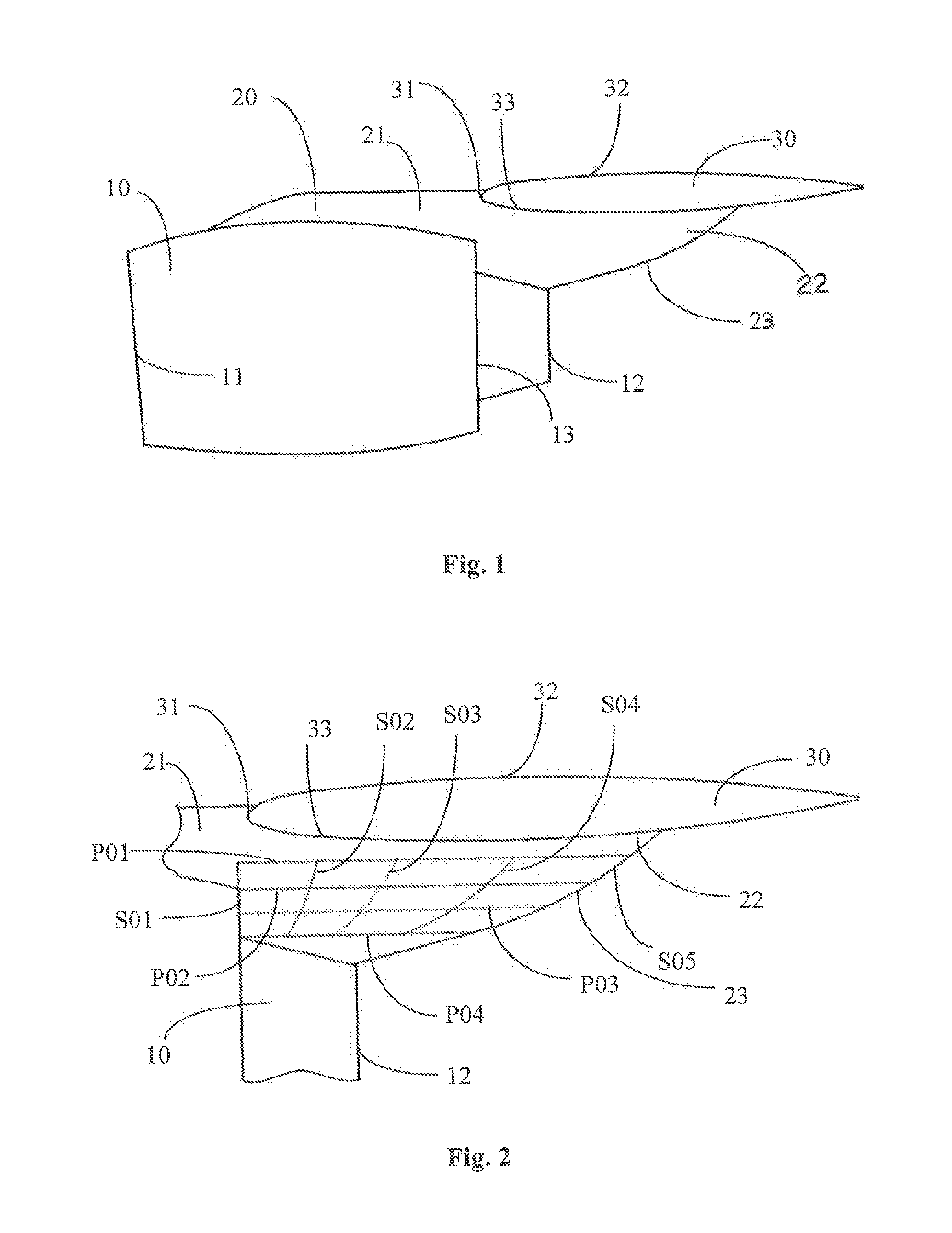Nose cone structure for pylon of aircraft with wing-hung layout
a technology of pylons and aircraft, which is applied in the direction of fuselage insulation, aircraft power plant components, aircraft power plants, etc., can solve the problems of adverse effect on the wing, adverse effect on the safety and economy of flight of aircraft, increase the weight of aircraft, increase the manufacturing cost and maintenance cost of aircraft, etc., to reduce resistance, improve aerodynamic performance, and optimize the passageway area
- Summary
- Abstract
- Description
- Claims
- Application Information
AI Technical Summary
Benefits of technology
Problems solved by technology
Method used
Image
Examples
Embodiment Construction
[0025]The following description will describe the nose cone structure of the pylon in an aircraft with a wing-mounted layout. In the following description, some orientation terms, such as “left”, “right”, “top”, “bottom”, “front” , “back”, “guide”, “forwards”, and “backwards”, are used with reference to the directions shown in the drawings, and the orientation terms are used as example rather than limitation. However, it should be appreciated that the described embodiments are only used to illustrate the special form for implementing and applying the present invention in an exemplary manner, rather than limit the scope of the present invention.
[0026]Referring to FIGS. 1 and 2, according to one preferred embodiment of the present invention, the improvement for the design of the nose cone structure of the pylon is achieved by the sectional control segments modeling for at least one part of the rear nose cone of the pylon. For the person skilled in the art, the modeling technology is w...
PUM
 Login to View More
Login to View More Abstract
Description
Claims
Application Information
 Login to View More
Login to View More - R&D
- Intellectual Property
- Life Sciences
- Materials
- Tech Scout
- Unparalleled Data Quality
- Higher Quality Content
- 60% Fewer Hallucinations
Browse by: Latest US Patents, China's latest patents, Technical Efficacy Thesaurus, Application Domain, Technology Topic, Popular Technical Reports.
© 2025 PatSnap. All rights reserved.Legal|Privacy policy|Modern Slavery Act Transparency Statement|Sitemap|About US| Contact US: help@patsnap.com



